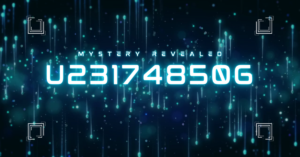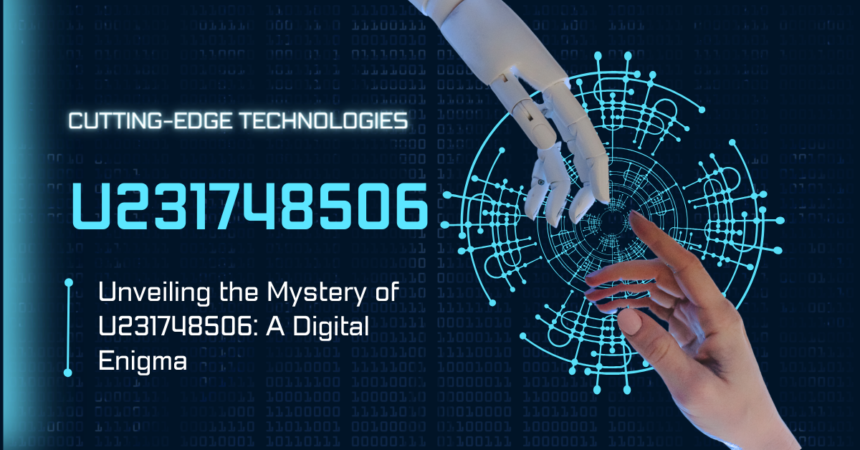Introduction: The Enigma of u231748506
In the vast digital landscape, there exists a cryptic code ‘U231748506′ that has piqued the curiosity of tech enthusiasts, researchers, and cybersecurity professionals alike. This enigmatic identifier code appears sporadically across various platforms, leaving behind a trail of questions. Is it a mere alphanumeric string, or does it hold deeper significance? Join us as we embark on a journey to decode the secrets behind U231748506.
Unveiling u231748506: Origins and Evolution
In our quest to decipher the enigmatic U231748506, it’s crucial to grasp the underlying technologies shaping our digital landscape. Understanding the Aiyifan AI Technology sheds light on the very fabric of innovation driving such mysteries. Dive deeper into the intricacies of artificial intelligence, a realm where this secret might find context.
The Birth of U231748506
The story of U231748506 begins with a group of visionary researchers who sought to explore the synergy of cutting-edge technologies. Their mission: to create a unique code that transcends mere utility. Little did they know that it would become a linchpin in the democratization of knowledge, granting access to resources for people from diverse backgrounds. But its impact extends beyond knowledge—it fuels innovation across industries.
The Versatile Composition
At first glance, U231748506 may appear as just another random combination of letters and numbers. However, its structured composition sets it apart. Eleven characters—starting with ‘u’ and followed by ten numeric digits—hint at intentional design rather than randomness. While it resembles established encoding protocols like Base64, this code remains distinct.
U231748506 in Action: Applications Across Industries

From software logs to database entries, it has made its mark. Its applications range from tracking data and validating identities to enhancing security measures against cyber threats.
U231748506 isn’t content with anonymity. It surfaces across web domains, mobile apps, databases, and software logs. Its recurring appearance defies categorization, leaving us to wonder: Is it a product code, a serial number, or something more? Businesses leverage use it to improve productivity, streamline operations, and make data-driven decisions. It’s a digital fingerprint that ensures information integrity in a competitive landscape
The Technological Significance of U231748506
1. Enhanced Digital Identification Protocols
It serves as a catalyst for improving digital identification mechanisms. Here’s how:
- Unique Fingerprint: Just as our fingerprints distinguish us from others, U231748506 acts as a unique digital fingerprint. It allows systems to recognize and authenticate users, devices, or transactions with precision. Whether it’s logging into a secure portal, conducting financial transactions, or accessing sensitive data, it plays a pivotal role.
- Multi-Factor Authentication (MFA): Many MFA systems incorporate U231748506 as one of the factors. By combining something the user knows (like a password) with something they possess, security is strengthened. This prevents unauthorized access even if one factor is compromised.
- Blockchain and Decentralized Identity: U231748506 aligns seamlessly with blockchain-based identity solutions. Decentralized identifiers (DIDs) leverage this code to create self-sovereign identities, empowering users to control their personal data without relying on central authorities.
2. Data Analytics and Insights
U231748506 isn’t limited to authentication; it also impacts data analytics:
- Traceability and Auditing: Organizations embed this code within data records. When analyzing large datasets, tracing the origin and lineage of information becomes crucial. It ensures data provenance, enabling auditors and analysts to validate the accuracy and integrity of data.
- Predictive Modeling: Machine learning models benefit from code based encoded data. Whether predicting customer behavior, stock market trends, or disease outbreaks, the consistent presence of U-231748506 aids in feature engineering and model training.
- Anomaly Detection: U231748506’s sporadic appearance can signal anomalies. For instance, sudden deviations in transaction patterns or user behavior may trigger alerts. Analysts investigate further, attributing these anomalies to specific linked events.
3. Privacy and Compliance
- GDPR Compliance: It plays a role in complying with data protection regulations. By anonymizing personal data using this code, organizations minimize privacy risks while still deriving insights.
- Pseudonymization: It allows pseudonymization—replacing identifiable information with U231748506-linked codes. This balances data utility and privacy, especially in research and healthcare domains.
The Mystery Unfolds: A Digital World – U231748506

Cybersecurity Implications
Our investigation reveals intriguing patterns in code usage. Could it be a secret cipher? A tool for secure communication? As cybersecurity professionals, we dissect its role, reverse-engineer its composition, and correlate it with security principles. The evidence points to a multifaceted purpose—one that transcends mere identification.
Unlocking the Future
As we continues to emerge in our research, we’re left with more questions than answers. What lies beyond its current applications? How can it transform data management, identification protocols, and security measures? Join us in unraveling the mystery and envisioning a future where U231748506 plays a pivotal role.
Conclusion: Embracing the Mystery
As we continue to unravel the layers of u231748506, we are reminded of the infinite potential of technology and the importance of responsible usage. The journey to decode is ongoing, and each discovery leads us to new possibilities. How will the continued exploration of this code shape the future of digital security and data management?
As we conclude our exploration, consider this: Could U231748506 be the key to a new era of digital innovation? What other secrets lie hidden within its alphanumeric confines? Share your thoughts, and let’s continue the conversation.



